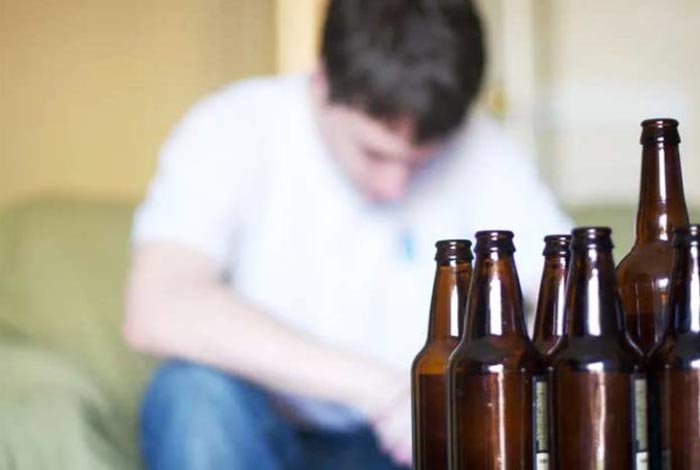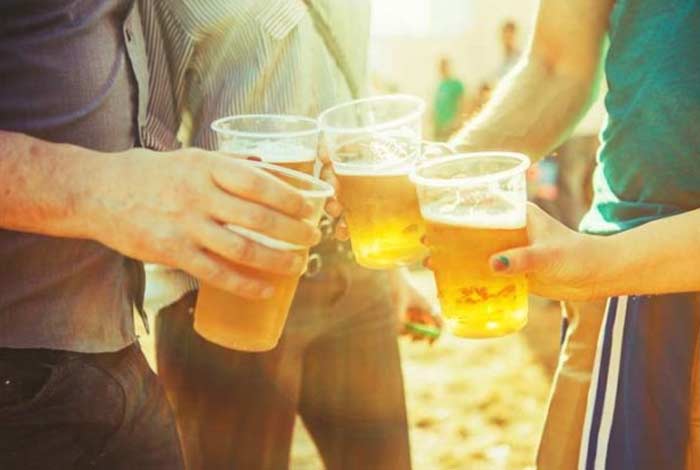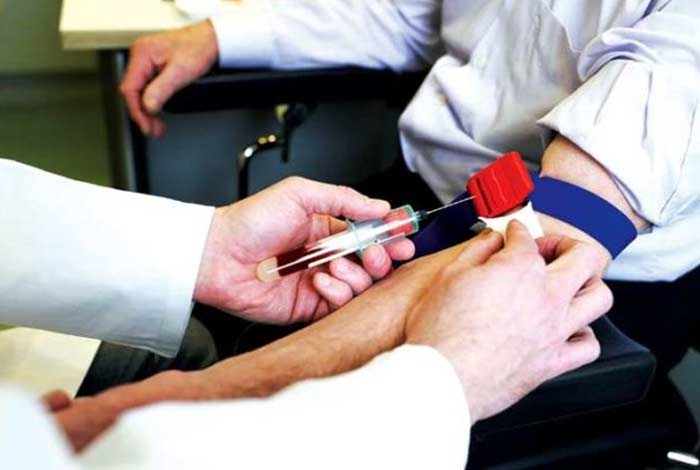
Overview and Facts
Alcoholism, also known as alcohol dependence, refers to the uncontrolled desire of consuming alcohol. It is the most severe form of alcohol use or abuse. Alcoholism is a condition that causes craving of alcohol and increased consumption of the same. This result in the development of alcohol tolerance, which means consuming a specific amount of alcohol continuously for an extended period of time gradually produces lesser effects of alcohol. So, to get the same level of effect, a person might require consuming more alcohol.
Certain withdrawal symptoms are encountered if a person stops taking alcohol, also loses control over stopping to drink once he/she has started drinking. Alcoholism is usually referred as alcohol use disorder (AUD) or alcohol addiction or alcohol dependence. This can often be categorized into mild, moderate and severe. Each category has several symptoms and side effects that could even be life threatening.
Possible complications of heavy drinking are severe amnesia, loss of sperm count, repeated ulcers, vomiting, gastrointestinal bleeding, inflammation of pancreas and delirium. Extended usage or alcoholism might even lead to liver failure, heart failure, brain and nerve damage, and certain types of cancer including mouth, throat, breast, and esophageal.
Alcoholism may also cause health conditions, such as a low bone mineral density, osteoporosis, tuberculosis and so on. According to the 2015 National Survey on Drug Use and Health in the U.S., nearly 1.5 million adults, aged 18 or more, had AUD. This includes 9.8 million males, while the rest were females, around 5.3 million. There were also 623,000 adolescents, aged between 13-17, that had AUD. [Source]
Symptoms of Alcoholism
Alcoholism can be recognized by the following symptoms:
- Repeated neglection of responsibilities like family, children and job due to drinking
- Use of alcohol while doing certain physical activities that require focus, such as driving
- Continued drinking even when it is harming one’s personal relationship
- Drinking to de-stress and relax
- Knowing that drinking causes harm, but still not able to quit
- Craving for alcohol when not drinking
- Spending a great amount of money on alcohol
- Behaving in a different manner after drinking
- Appearing tired, unwell or fatigued
- Inability to refuse alcohol
- Depression, anxiety or other mental health issues.
- Becoming dishonest or secretive
- Memory impairment and loss of thinking ability
- Poor coordination and slurred speech patterns
- Becoming depressed on not having access to alcohol
- Not sharing the extent of alcohol abuse
- Stomach pains, liver diseases and blackouts

Risk Factors of Alcoholism
Risk factors that might lead a person to develop alcoholism are described below:
- Males consuming more than 15 drinks per week
- Female consuming more than 12 drinks per week
- Consuming more than five drinks per day on any day of a week (binge drinking)
- Having a parent with AUD
- Broken homes
- Smoking cigarettes
- Mental health issues like depression, schizophrenia or anxiety
- A person may be at a high risk of developing alcoholism if he/she is under constant stress, sensitive to peer pressure, and has a part of a family which supports drinking, has a close relative with AUD and has low self-esteem
- Considering drinking for coping a loss, or feeling good, and overcoming anxiety

Do I have Alcoholism?
If you have a constant urge to drink alcohol, nausea, irritability, headaches, and sleep problems, it might be either alcohol use disorder or a case of insomnia, depression, anxiety or anorexia nervosa.
However, if a person, at any point of time, try to reduce the alcohol intake or stop it, he/she may encounter certain withdrawal symptoms, such as nausea, anxiety, insomnia, fever, high blood pressure or hallucination.
Hence, for proper diagnosis, a person must immediately consult a doctor before concluding anything. The doctor might use several diagnostic tests to identify the actual condition.

Causes and Prevention of Alcoholism
Causes of Alcoholism:
Both internal and external factors contribute to alcoholism. The possible causes of alcoholism are discussed below:
- Psychological Factors: Certain psychological problems increase the probability of developing alcoholism. Individuals suffering from mental disorders like depression, social anxiety or bipolar disorder are more prone to develop alcoholism.
These people often link alcohol with mood upliftment and easing the pain associated with their mental condition. These individuals might often neglect the risks and warning signs that could lead to alcoholism. - Personality Factors: Certain individuals with positive expectations about alcohol use, such as introverts might develop alcoholism to ease the discomfort being in social situations. Also, people, whose likeableness is more when they are drunk, often become heavy drinkers and end up developing alcoholism.
- Personal Choice: A person, who has started drinking can even disregard his/her personal choice and continue drinking that might lead to alcoholism.
- History of Drinking: If a person has indulged into heavy drinking for an extended period of time has more chance of developing alcoholism. Alcohol use generally rewires the brain to desire for more alcohol and to eventually depend on it.
- Genetic Factors: Children of an alcoholic parent are substantially more likely to develop alcoholism, despite being raised by a non-alcoholic. The genetic factors behind alcoholism are very complex and should be researched further. It is not caused by any single gene, but interaction of several genes is thought to be responsible. There are around 51 such genes that are linked with alcoholism.
- Familial Factors: Being part of a family, where there is excessive alcohol usage or regular encouragement to drink alcohol causes a person to develop eventually develop alcoholism.
- Environment Factors: Due to easier access and availability of alcohol, the people around are more likely to develop alcoholism. Whereas, people, who do not have an easier and cheaper access to alcohol, are less prone to develop alcoholism. In fact, a survey revealed that individuals with higher family income tend to be more susceptible to have alcoholism.
- Social and Cultural Factors: People residing in places, where alcohol acceptance is much and is regarded as a way of celebration, are much more likely to develop alcoholism. Even religions that discourage alcohol use directs people to drink less or not to drink completely. However, a few do not pay heed to these religious warnings and teachings and ultimately develop alcoholism in future.
- Educational and Career Factors: Certain people from education sectors like college tend to develop heavy drinking habits leading to alcoholism. Also, people in high-risk professions like doctors and army persons tend to drink heavily and end up developing AUD.

Prevention of Alcoholism:
The preventive approach for alcoholism can be divided into three categories – primary, secondary and tertiary. These are described below:
- Primary Prevention: Primary prevention of alcoholism includes programs, risk groups, use of electronic media for awareness, intervention by target groups, legal approach (defining minimum age to drink, etc.), raising the price/taxes on alcoholic beverages, banning advertisements and help people in limiting their overall alcohol consumption. In this approach, parents can become a role model for their children.
- Secondary Prevention: The secondary prevention includes early diagnosis of alcoholism, appropriate treatment of addiction as well as managing withdrawal symptoms and associated ailments like depression, anxiety, cirrhosis and vitamin deficiency. Post detoxification counseling and further follow-ups are also included in secondary prevention. Implementing several changes in home, college or work environment also help prevent alcoholism.
- Tertiary Prevention: Tertiary prevention majorly involves detoxification, AUD treatment and other rehabilitation programs comprising vocational guidance, recreation, counseling and aftercare.

Diagnosis and Tests for Alcoholism
Generally, following an intervention by a loved one, a person suffering from Alcohol Use Disorder can visit a doctor for proper diagnosis and confirmation of the condition. Given below are two diagnostic methods:
- Surveys that Aid in Diagnosis: Doctors or professionals use widely famous surveys to diagnose alcoholism. One such survey is CAGE, where C refers to the need felt to “cut” down alcohol, “A” question asks whether patients feel “annoyed” when others discuss their heavy drinking, “G” question asks whether they have experienced guilt after consuming alcohol, and “E” question asks whether they have ever used alcohol as “eyeopener” to cure a hangover the next morning after drinking.
Another test is AUDIT, which consists of ten questions related to the frequency of drinking, quantity of drinking and other related issues. - Blood Tests that Diagnose Alcoholism: Tests for alcohol in blood do not generally predict alcoholism as they only indicate the recent consumption of alcohol and usually, don’t specify regular or chronic use of alcohol.
However, presence of specific compounds and hormones might point towards alcoholism. Higher level of carbohydrate-deficient transferrin (CDT) indicate heavy drinking. Likewise, aspartate aminotransaminases (AST) and alanine aminotransaminases (ALT) may also indicate any liver damage due to drinking. Gamma-glutamyl transferase (GGT) is an enzyme in the liver, whose level is often found to be elevated in people with AUD. Reduced amount of testosterone in the blood also indicates alcoholism.

Treatment and Care for Alcoholism
Treatment of Alcoholism:
Treatment of alcoholism depends on the stages of alcoholism, viz., mild, moderate or the severe. A person with mild alcoholism can help himself through self-motivation and support groups. People with moderate alcoholism should use a combination of the below-given therapies, whereas those with severe alcoholism need to enroll rehabilitation centers that can help him to quit alcohol, dealing with the withdrawal and start on with a new improved life.
- Initiating Treatment by Getting Help from Doctor: With the help of a doctor, a person suffering from AUD can begin with a specific treatment plan. The doctor may also refer a person with alcoholism to some other expert or treatment center if required.
- Treatment Options: The treatment options depend on the severity of the condition and the level of motivation. Some believe that combination of one or more therapies help in getting over alcohol abuse. A person may require enrolling in a residential program or occasionally visiting the clinic as required.
- Detoxification: This is the first step, necessary for recovering from alcohol use disorder. Detoxification must be done in the presence of professionals, who help reduce the withdrawal symptoms like fever, hallucination and seizures.
- See a Therapist or Counselor: A therapist or counselor can help a person to control the drinking or limiting it strictly. They can teach a person how to deal with the triggers, build strong support system, set new goals and help patients to achieve them, and being changes in his/her behavior that initiate him/her to drink. Family or individual therapy can be employed to overcome anxiety and depression.
- Medications: There is no medication which can cure alcoholism, but several medications can reduce the urge of drinking by making drinking less enjoyable. Disulfiram will make a person feel sick if he/she drinks or he/she would throw away the drink, naltrexone blocks the high one gets from alcohol, acamprosate can help with the alcohol craving. Drugs used for epilepsy, smoking or pain can reduce the side effects due to withdrawal.
- Support Groups: Group therapy or support group can help a person with alcoholism during rehabilitation phase. Group therapy is led by a therapist, who provides much strength and support to quit alcohol, along with the support of other members. On the other hand, support groups don’t have a therapist but comprised of people with alcohol use disorder. These people can offer support and advices to a person with alcoholism.
Care for People with Alcoholism:
Following measures can be taken while dealing with a person with alcoholism:
- Be empathetic when approaching a person with alcoholism
- Be honest with your concerns and support the person with alcoholism
- Listen to them with honesty and compassion
- Offer all the necessary support to them
- Intervene to help the person to realize the situation and get some medical help or rehabilitation
- Practice what you preach; never ever smoke or drink alcohol in the presence of a person with alcoholism

OTC Medications and Self-Management Methods for Alcoholism
Over-the-Counter (OTC) Medications for Alcoholism:
As such, there are no over-the-counter (OTC) medicines for alcoholism, but various supplements that can be used to reduce the stress and craving related to alcoholism. These may include vitamin B, vitamin C complex, magnesium, selenium and zinc supplements. Also, a combination of essential amino acids, such as glutamine, and glutathione and carnitine may help reduce the blood sugar level fluctuations.
Self-Management Methods for Alcoholism:
- A person with alcoholism can manage his/her conditions with the following tips:
- Empower yourself, not the alcohol addiction
- Know that the power to change is within
- Recognize your weaknesses and address the cause of your trouble
- Remember the pain encountered after drinking that paves the way to quit the drinking habit
- Know the factors that could help quit alcohol
- Don’t keep alcohol at home or workplace
- Avoid visiting pubs or where there is strong influence to drink
- Keep a sober company
- Join a support group or therapy group
- Try indulging in meditation and yoga to uplift the overall health and feel healthy
- Recognize yourself as healthy and as a person, who never use alcohol

Natural Ways to Cure Alcoholism
There are several ways to cure alcoholism naturally. These are discussed below:
- Herbs: Herbs have been used for curing many diseases and conditions since ancient times. Herbs like milk thistle are often used to cure the liver ailments. It is known to reducing liver damage due to alcohol abuse. Kudzu, an ancient Chinese herb, is believed to reduce the alcohol craving. Dandelion is conventionally used for liver-related issues and to reduce alcohol withdrawal symptoms.
- Homeopathy: Homeopathy can be employed as a supportive therapy along with the support group and counseling. A homeopath might consider giving medicines like arsenicum album for anxiety and nausea. Similarly, Nux vomica for compulsiveness, irritability, nausea and vomiting due to alcoholism, and Lachesis muta for alcohol craving and associated headache can be prescribed by a homeopath.
- Cognitive Behavioral Therapy: Cognitive behavioral therapy (CBT) with a psychologist or psychiatrist is a therapy, which helps alter a person’s beliefs and thinking patterns about drinking. A doctor might recommend a qualified therapist for the same. People, who suffer from post-traumatic stress disorder (PTSD), have shown great improvements after this therapy.
- Acupuncture: In certain cases, acupuncture may act as a useful supportive therapy for curing alcohol addiction. Acupuncture as a treatment for alcohol abuse has shown that it can significantly reduce alcohol craving and withdrawal symptoms. It might be used in combination with support groups and counseling.

Health Tip by Expert
To limit the intake of alcohol, start on with a big glass of water and order a sparkling water in between drinks. This can make sure one stays hydrated and limit going overboard with alcohol consumption.




